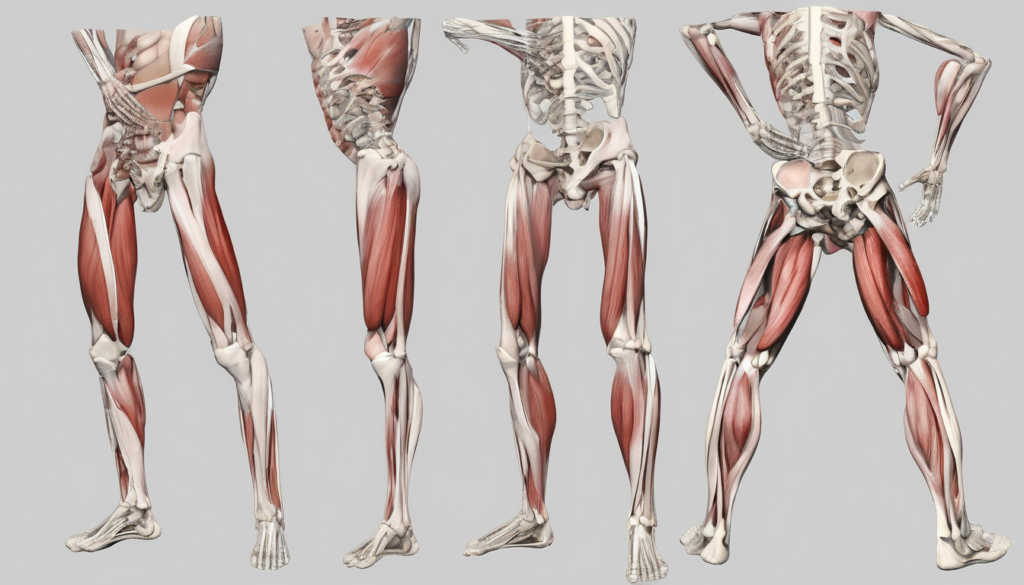Sharp pain from a hip flexor strain can stop your fitness routine and daily activities instantly. Simple movements become challenging. Most mild cases need one to three weeks of rest and treatment to recover fully, while severe strains might keep you inactive for four to eight weeks or longer.
Your recovery timeline depends on following the right treatment approach. These injuries could take months to heal and might develop into chronic pain problems without immediate proper care. Hip flexor injuries happen when the muscles that help flex your hip tear, sustain damage, or become inflamed. Direct trauma, poor warm-up, or overusing these vital muscles often cause these injuries.
This piece offers doctor-approved strategies to speed up your recovery. You’ll find information about different grades of hip flexor strains and learn ways to prevent future injuries. The content helps you get back on your feet safely, whether you have a minor twinge or a serious strain.
Understanding Hip Flexors and Their Role
Your hip flexors do the heavy lifting every time you walk, climb stairs, or bend at your waist. These powerful muscles connect your lower back and pelvis to your thigh bones. They make everyday movements and athletic activities possible.
Key muscles involved in hip flexion
The hip flexor group has five main muscles that work as a team to flex your hip and bring your knee toward your chest. The iliopsoas, which includes the iliacus and psoas major muscles, acts as your body’s most powerful hip flexor. This muscle complex links your lower spine to your femur (thighbone).

The rectus femoris (part of your quadriceps), sartorius (your body’s longest muscle), and pectineus round out the group. Each muscle has its own job in hip movement. The rectus femoris handles about two-thirds of flexion torque up to 60 degrees, while the iliopsoas takes over beyond that angle.
Where hip flexor pain is typically felt
You’ll usually feel hip flexor pain at the front of your hip, right where your thigh meets your pelvis. The pain can show up in different spots based on which muscle you’ve hurt:
- Front of the hip and groin area (most people feel it here)
- Upper thigh or along the front thigh
- Deep in the inner hip or groin (especially when the iliopsoas acts up)
- Lower back (often happens with tight psoas muscles)
The pain gets worse if you lift your knee, walk uphill, or stand up after sitting too long.
Why these muscles are prone to injury
These muscles can get hurt easily. Our modern lifestyle affects hip flexor health by a lot – sitting for hours keeps these muscles short, which leads to tightness over time. Research shows that hip flexor injuries range from 5% to 28% in high-risk sports groups.
Your hip flexors might strain during quick movements like changing directions while running or kicking. Athletes who run, play soccer, hockey, practice martial arts, or dance face bigger risks. Poor posture, weak muscles, skipping warm-ups, and muscle imbalances make injuries more likely.
Hip flexors work differently from other muscles. They constantly switch between strong contractions and full stretches during activities like running. This makes them easy targets for overuse injuries and tears.
Common Causes and Types of Hip Flexor Strain

Hip flexor injuries occur through specific mechanisms that shape their severity and recovery path. The mechanisms behind these injuries help us treat and prevent them from happening again.
Overuse and repetitive motion
Repetitive movements cause most hip flexor strains. Athletes who take part in cycling, running, martial arts, soccer, and dance have higher risks because these activities put repeated stress on their hip flexors. Office workers can also develop problems since sitting for long periods keeps these muscles shortened.
The first sign of overuse shows up as tired hip flexors. So when people keep exercising without enough rest, their muscles become inflamed, sore, and eventually damaged. Sports that need frequent stopping, starting, and changing directions raise the risk of strains.
Sudden movements or trauma
While less frequent than overuse injuries, acute trauma can cause immediate and sometimes severe damage to hip flexors. These injuries happen through:
- Falls or slips that push the hip into extreme positions
- Direct hits to the hip flexor muscles during contact sports
- Quick muscle contractions while sprinting or making explosive moves
- Rapid direction changes at high speeds
Regular movements can also cause strains, especially when you have tight muscles or poor conditioning. Your risk of acute strains goes up substantially when muscles are tight and not properly conditioned.
Grades of hip flexor strain explained
Hip flexor strains fall into three distinct grades based on how severe they are:

Grade 1 (Mild): Small stretches with minimal muscle fiber damage. You’ll feel mild pain but can still use your hip normally. Most people recover in 1-3 weeks with proper care.
Grade 2 (Moderate): This means substantial muscle fiber tears with some loss of function. Pain gets worse, and your hip might fail while walking. Recovery usually takes 4-6 weeks of focused treatment.
Grade 3 (Severe): A complete muscle tear or rupture. Walking becomes hard without limping, and you need medical care right away. Recovery takes more than 8 weeks and might need surgery.
These injuries can easily happen again without proper treatment and may turn into long-term problems.
Recognizing Symptoms and Getting Diagnosed
Early detection of hip flexor strain symptoms helps determine severity and create an appropriate treatment plan. Your recovery timeline depends on recognizing these warning signs.
Sharp pain in the front of the hip or groin
Hip flexor strains usually cause pain at the front of your hip where your thigh meets your pelvis. The pain varies from a mild ache to sharp, stabbing sensations based on severity. Patients often confuse hip flexor pain with groin pain because these muscles connect closely. The pain gets worse with certain movements – standing up from chairs, climbing stairs, or sitting too long.
Difficulty lifting the leg or walking
Hip flexor strains create clear functional limits beyond just pain. Your knee-to-chest lifting motion might feel weak. Walking becomes hard & you might start limping. More severe cases show thigh muscle spasms, cramping, and problems with basic movements. Simple tasks like climbing stairs, bending down, or walking uphill become much harder.
When to seek medical evaluation
You should see a doctor if:
- Pain lasts more than 2-3 weeks even with rest and home care
- You’re unable to bear weight on the affected leg
- You notice major swelling, bruising, or visible deformity
- Pain affects your daily activities
Your doctor will check your medical history and test your range of motion to find where it hurts. They might order X-rays to check that you don’t have hip fractures.
Hip Flexor Strain Treatment and Recovery Timeline
Quick treatment right after a hip flexor strain can reduce recovery time by a lot and stop long-term problems from developing.
RICE method and home care tips
The RICE protocol creates the foundation for immediate care:
- Rest: Let the muscle heal by avoiding painful activities
- Ice: Use ice packs for 10-15 minutes every 2-3 hours during the first 48-72 hours
- Compression: Elastic bandages or compression shorts will reduce swelling
- Elevation: Place pillows under your hips to keep them above heart level while lying down
Mild strains usually respond well to this home treatment when you follow it regularly.
Physical therapy and strengthening exercises
Gentle stretching should begin after the acute pain goes away to restore flexibility. Your physical therapist will usually recommend:
- Progressive strengthening exercises
- Range of motion activities
- Manual therapy techniques
These methods help rebuild muscle strength and prevent new injuries.
Medications and advanced clinical options
Common pain relievers like ibuprofen help reduce pain and inflammation. Severe cases might need:
- Corticosteroid injections to reduce inflammation
- PRP therapy to speed up tissue healing
- Surgery, but only rarely for complete tears
Expected healing time by injury grade
Recovery times depend on how severe the injury is:
- Grade 1: 1-3 weeks with proper care
- Grade 2: 4-6 weeks with structured rehabilitation
- Grade 3: 8-12 weeks with complete treatment
Injuries can take months to heal if you don’t get proper care right away.
Conclusion
Hip flexor strains can range from mild discomfort to serious injuries that might keep you sidelined for months. You can make a substantial difference in your recovery by spotting symptoms early and taking the right action. The RICE method gives your body the best chance to heal properly, whether you have a mild Grade 1 strain or a more severe tear.
Note that recovery takes time. Your body needs enough time to repair damaged tissue, especially when you have moderate to severe strains. You can prevent recurring injuries by following your doctor’s advice and completing the full rehabilitation process. Many patients go back to normal activities too quickly, so they end up with reinjury and possibly chronic problems.
Physical therapy is a vital part of complete recovery. A well-laid-out program helps fix the immediate injury and spots any muscle imbalances or movement patterns that led to your strain. It also strengthens surrounding muscles to better support your hip joint during daily activities and sports.
Prevention needs as much focus as treatment. You can substantially reduce your risk of future strains after recovery by staying flexible through regular stretching, building stronger core and hip muscles, and warming up properly before exercise. Your body’s pain signals help you avoid pushing beyond your current limits.
Your hip flexor health affects almost every movement you make throughout the day. These injuries can be frustrating, especially when you have an active lifestyle. Being patient with the recovery process guides you toward better long-term results. This piece shows you how to overcome hip flexor strains and return to your normal activities safely and effectively with proper care.
Key Takeaways
Understanding hip flexor strains and implementing proper treatment strategies can significantly accelerate your recovery and prevent chronic complications.
• Act fast with RICE protocol: Apply rest, ice, compression, and elevation immediately after injury to minimize damage and reduce recovery time from weeks to days.
• Recovery varies by severity: Grade 1 strains heal in 1-3 weeks, Grade 2 requires 4-6 weeks, while Grade 3 can take 8-12 weeks with proper treatment.
• Don’t ignore early symptoms: Sharp front hip pain, difficulty lifting your leg, or walking problems require immediate attention to prevent chronic issues.
• Physical therapy is essential: Structured rehabilitation addresses muscle imbalances and movement patterns that caused the initial injury, preventing reoccurrence.
• Prevention beats treatment: Regular stretching, proper warm-ups, and core strengthening significantly reduce your risk of future hip flexor strains.
Without proper immediate care and complete rehabilitation, these seemingly minor injuries can develop into chronic pain conditions that persist for months. The key to successful recovery lies in respecting your body’s healing timeline while actively participating in appropriate treatment protocols.
FAQs
Q1. How long does it typically take for a hip flexor strain to heal?
Recovery time varies depending on the severity of the strain. Mild (Grade 1) strains usually heal in 1-3 weeks, moderate (Grade 2) strains take about 4-6 weeks, and severe (Grade 3) strains can require 8-12 weeks or more for full recovery. Proper treatment and following medical advice are crucial for optimal healing.
Q2. What is the most effective immediate treatment for a hip flexor strain?
The RICE method is the most effective immediate treatment: Rest the affected area, apply Ice for 10-15 minutes every 2-3 hours, use Compression with elastic bandages, and elevate your hips above heart level when lying down. This approach helps reduce pain and swelling in the first 48-72 hours after injury.
Q3. Is it safe to stretch a strained hip flexor?
Once acute pain subsides, gentle stretching can be beneficial. However, it’s crucial to start stretching only under the guidance of a healthcare professional or physical therapist to avoid aggravating the injury. Stretching too soon or too aggressively can delay healing or cause further damage.
Q4. What are the key signs that indicate a hip flexor strain?
The main symptoms include sharp pain in the front of the hip or groin area, difficulty lifting the leg or walking, and increased pain during specific movements like climbing stairs or getting up from a seated position. If you experience these symptoms, especially if they persist, it’s important to seek medical evaluation.
Q5. How can I prevent future hip flexor strains?
Prevention strategies include maintaining flexibility through regular stretching, strengthening your core and hip muscles, warming up properly before exercise, and avoiding prolonged periods of sitting. Additionally, listening to your body and not pushing beyond your current capabilities during physical activities can significantly reduce the risk of strains.





